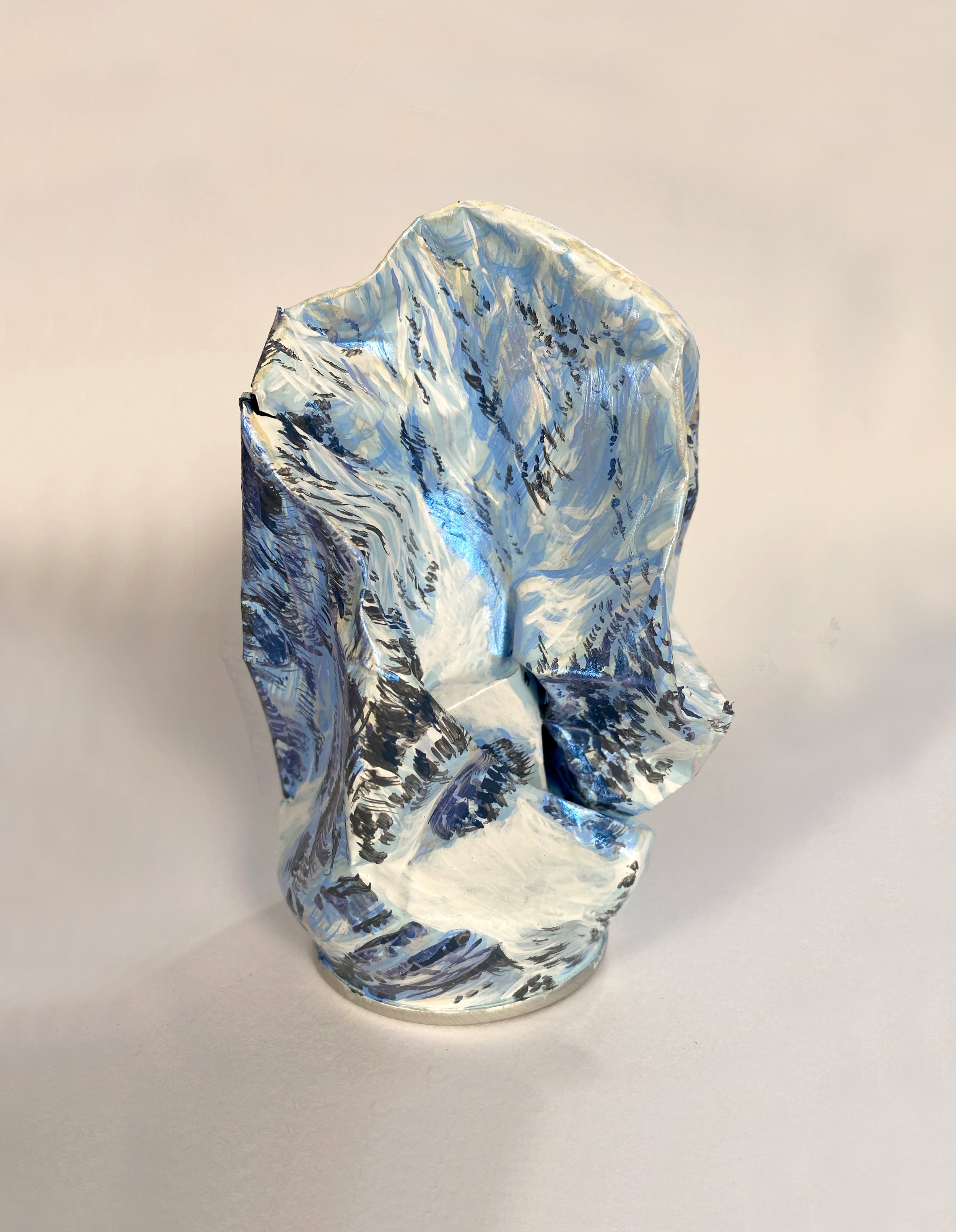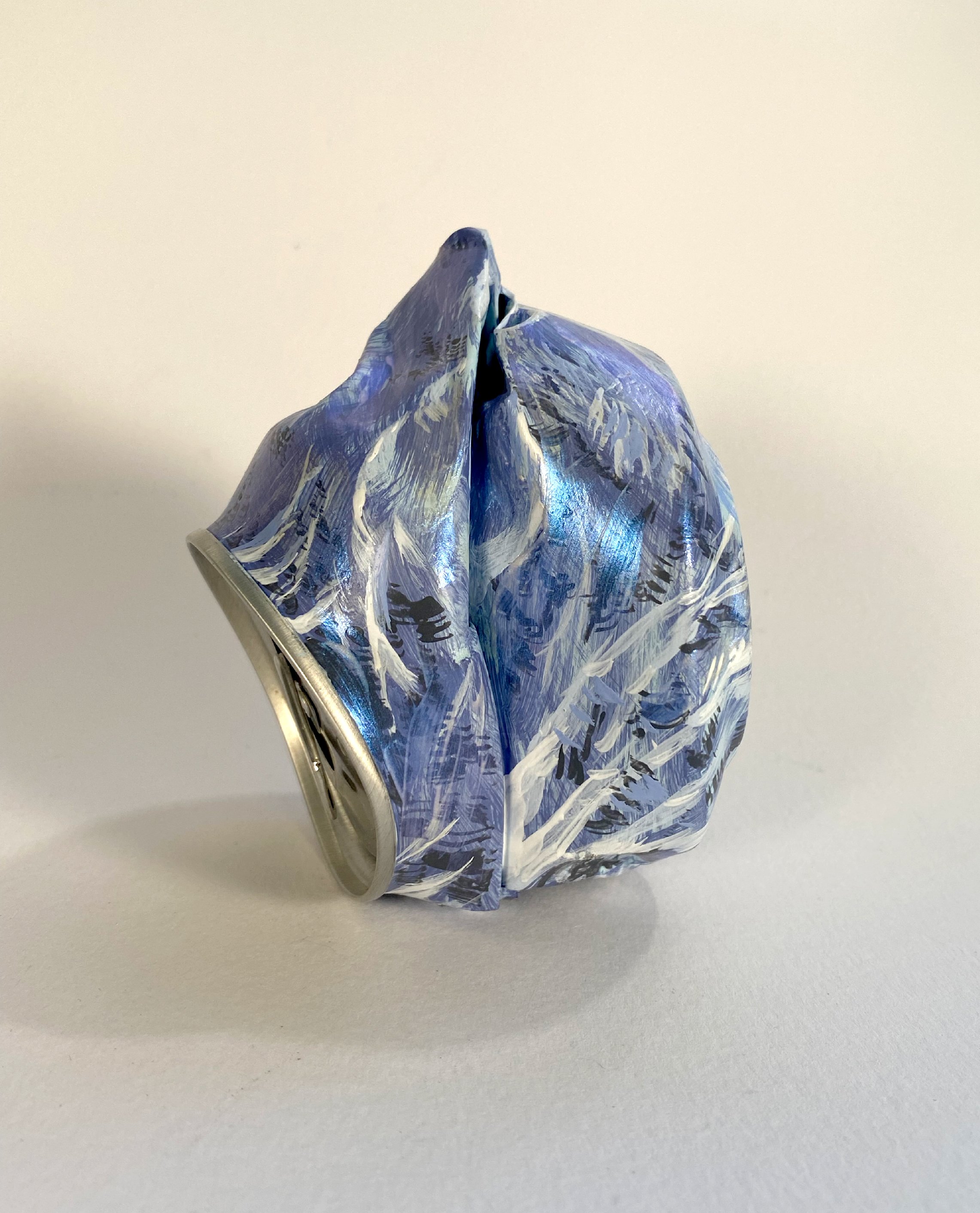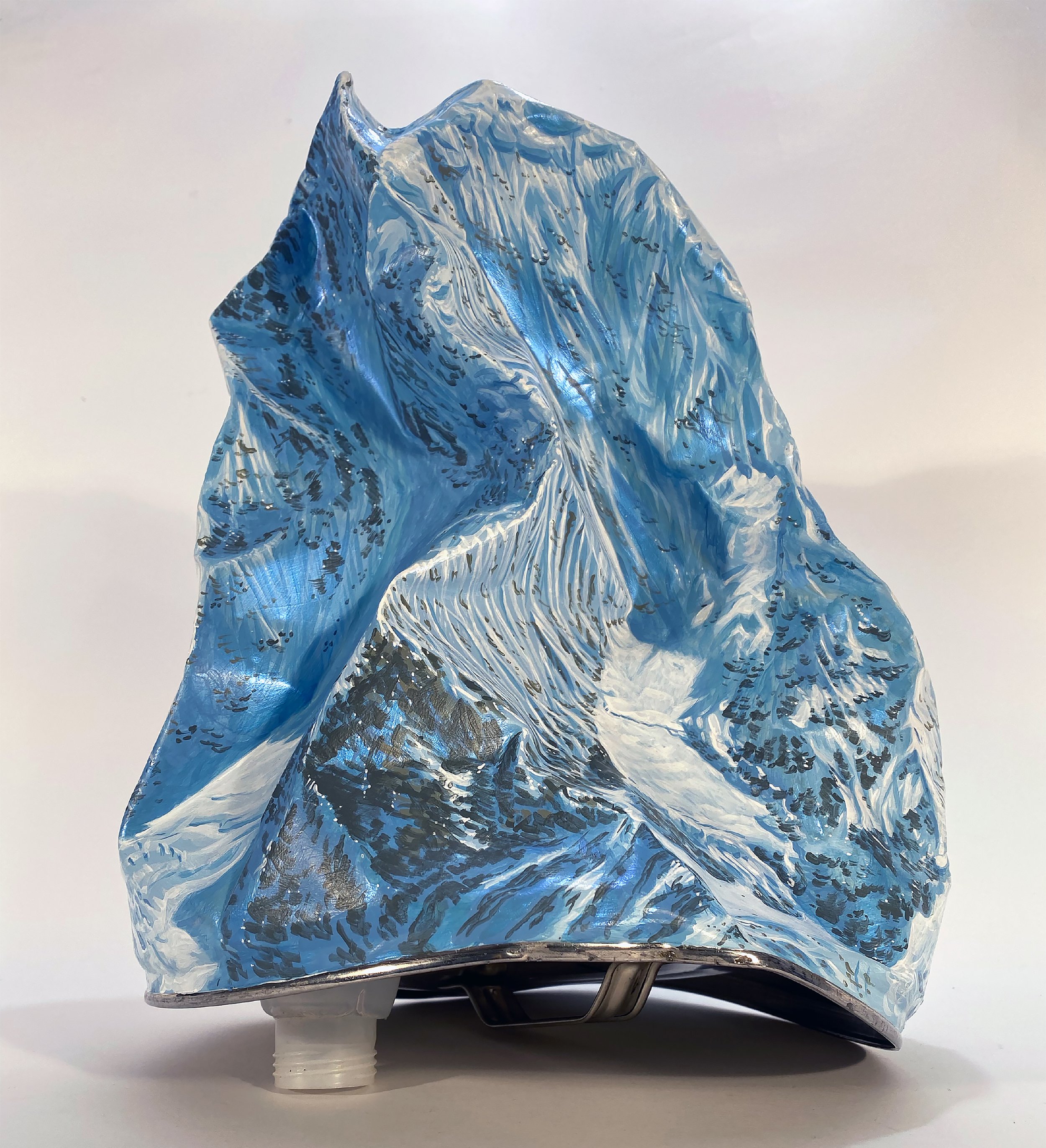Cholatse
Cholatse
Acrylic on recycled tin can.
12.5cm by 8cm by 7cm.
This can series Alex has made for his proposed residency in Namche Bazaar, Nepal. Alex was given the brief to make art from waste which accumulates on Mount Everest. The project in collaboration with Sagarmartha next will be up-cycling rubbish to create sculptures of the surrounding himalayan mountains. Alex selects from the waste, a can that has features resembling part of a mountain or Valley. He then goes on to shape them more with hammers and finally builds up layers of paint to resemble the unique forms of the landscape such as rivers or waterfalls. The work comments on the fragile nature of the most sublime region of our planet, therefore the work responds to the need for conservation and pollution reduction. By taking the very waste that would other wise be burnt or buried on these mountains and transforming it into something of worth it helps to preserve these very places for future generations.
Cholatse (also known as Jobo Lhaptshan) (Nepali: चोलात्से) is a mountain in the Khumbu region of the Nepalese Himalaya. Cholatse is connected to Taboche (6,501m) by a long ridge. The Chola glacier descends off the east face. The north and east faces of Cholatse can be seen from Dughla, on the trail to Mount Everest base camp. There is a lake just below this pass to the east, and in Tibetan 'cho' is lake, 'la' is pass, and 'tse' is peak so Cholatse means literally "lake pass peak". Cholatse was first climbed via the southwest ridge on April 22, 1982 by Vern Clevenger, Galen Rowell, John Roskelley, Bill O'Connor and Peter Hackett. The north face was successfully scaled in 1984.
Please note shipping costs are included in the final sale price.







